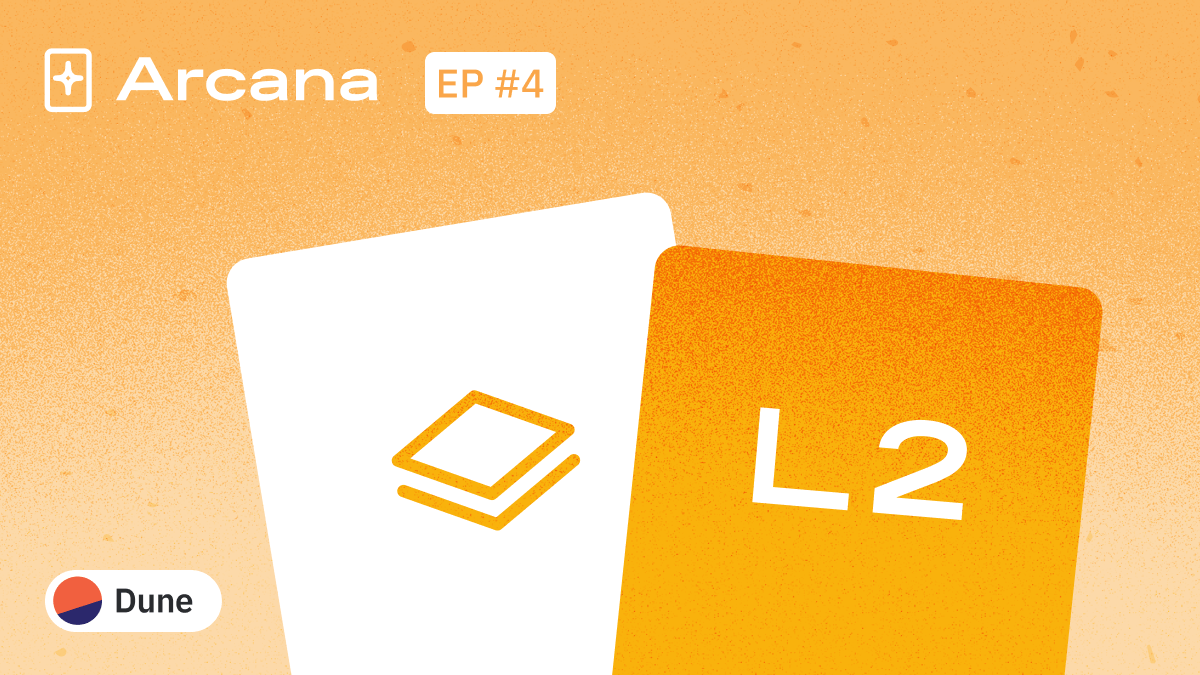A Primer on L2 (ft. MSilb7) | Dune Arcana #4
"L2s (Arbitrum & Optimism) account for 30-40% of all transactions on Ethereum, but consume only 2% of the total gas..." That is one of the trends mentioned by Tomasz Tungas in his talk at DuneCon regarding The State of Web3 in 2022. This week we explain what Layer 2 is with on-chain data.
Exclusive content
This content is available for newsletter subscribers only. Sign up to get access!

Download Content
Complete the form to access this content.


"L2s (Arbitrum & Optimism) account for 30-40% of all transactions on Ethereum, but consume only 2% of the total gas..." That is one of the trends mentioned by Tomasz Tungas in his talk at DuneCon regarding The State of Web3 in 2022. This week we explain what Layer 2 is with on-chain data.
Ready to bring your Blockchain to Dune?
Power your App with Dune data
Steam Dune data in your analytics environment

Want to join Dune?
Related chains:
No items found.


Dune Datashare
Get 1.5M crypto datasets, ready to export or stream directly where you need it.
Ready to get started?
Individuals + Small Teams
Create and explore queries, dashboards and trends with 500k+ data analysts.

Enterprise
Tailored solutions trusted by 6k+ Web3 teams and premier enterprises




